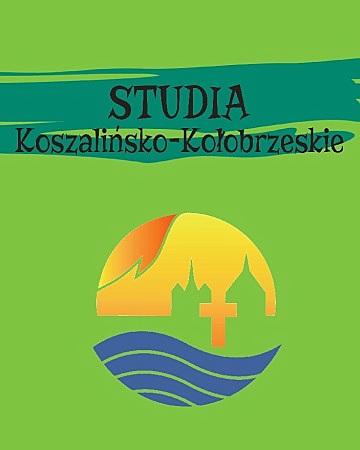
ISSN: 1230-0780
eISSN: 2719-4337
OAI
DOI: 10.18276/skk.2018.25-04





Issue archive /
nr 25 2018
Święta Rodzina – żywą ikoną Trójcy Świętej
(The Holy Family as a living Icon of the Holy Trinity)
| Authors: |
Paweł
Błasiak
doktorant Wydziału Teologicznego Uniwersytetu Szczecińskiego |
| Keywords: | Holy Trinity The Holy Family unity of people communio caritatis interpersonal relationships |
| Data publikacji całości: | 2018-09-12 |
| Page range: | 14 (69-82) |
Abstract
This article studies the issue of the image of God in man. It strives to find this image on the social level, meaning a person’s relationship with others. As a starting point, the author chose the Biblical Account of the Creation of Man. People are created as a man and a woman, in the image of God, who is the First in the relationship of the Persons of the Holy Trinity. Just after people sinned, they broke their relationship with the Lord God. However, the Lord God does not abandon his creatures. He sends his Son to seek people out and build a new relationship between God and man. In his wisdom and in his way, he teaches men about God. He communicates with people in the language of the Word, through signs and pictures. The Holy Family of Nazareth where our Lord Jesus Christ was born and raised and was started thanks to God’s grace in cooperation with people can also be a way for God to communicate with people according to the author. God who lives in a perfect relationship as the Trinity can also be seen in the Holy Family, which is the model of interpersonal relationships based on communio caritatis. People can imitate them in their own family lives and homes, and in this way, they come closer to getting to know God not only on the intellectual level, but experience God in their personal lives thanks to their relationships with others. The Holy Family of Nazareth can be described as the Earthly Holy Trinity, meaning that it can be understood as a living icon of the Holy Trinity. As such, it helps us to get to know God in the One Holy Trinity. Not being God itself, the Holy Family represents God thanks to its virtues.
Download file
Article file
Bibliography
| 1. | Augustyn. O Trójcy Świętej. Kraków: Znak, 1996. |
| 2. | Batut, Jean-Pierre. „Monarchia Ojca, porządek pochodzeń, perychoreza: Trzy klucze teologiczne do poprawnego wyznawania wiary trynitarnej”. W: Tajemnica Trójcy Świętej, red. Lucjan Balter, 325–336. Poznań: Pallottinum, 2000. |
| 3. | Bazyli Wielki. O Duchu Świętym. Warszawa: Instytut Wydawniczy PAX, 1999. |
| 4. | Benedykt XVI. „Przemówienie do Kurii Rzymskiej o poprawnej interpretacji Soboru Watykańskiego II”. L’Osservatore Romano, wydanie polskie 2, 276 (2006): 12–15. |
| 5. | Berthier, Jan. Kult i naśladowanie Świętej Rodziny. Ciechocinek: Bernardinum, 2003. |
| 6. | Blanquet, Joseph. La Sagrada Familia, icono de la Trynidad. Barcelona: Hijos de la Sagrada Familia, 1996. |
| 7. | Da Massa, Felice. Tancredi. La fanciullezza di Gesu. Firenze: Libreria Fiorentina Editrice, 1927. |
| 8. | Dąbrowski, Dariusz. „Teologia serca. Wykład podczas Sympozjum Józefologicznego w Kaliszu, 14.05.2011”. Dostęp 17.02.2017. http://wspolnotajozefa.blogspot.com/2012/10/teologia-serca.html. |
| 9. | Franciszek. „Rodzina jest darem dla Kościoła i świata”. Dostęp 1.08.2017. http://papiez.wiara.pl/doc/2729070.Rodzina-jest-darem-Pana-dla-Kosciola-i-swiata. |
| 10. | Grzegorz z Nazjanzu. Mowy wybrane. Warszawa: Instytut Wydawniczy PAX, 1967. |
| 11. | Homerski, Józef. „Pieśń o stworzeniu świata. Refleksje egzegetyczno-teologiczne nad tekstem Rdz 1,26–28 i 2,7.15.18.21–23”. W: Początek świata – Biblia a nauka, red. Michał Heller, Michał Drożdż, 17–31, Tarnów: Wydawnictwo Diecezji Tarnowskiej, 1998. |
| 12. | „Internetowa Liturgia Godzin”. Dostęp 18.11.2016. http://www.brewiarz.pl/czytelnia/rodzina.php3. |
| 13. | Jan Paweł II. Familiaris Consortio. Lublin: Redakcja Wydawnictw Katolickiego Uniwersytetu Lubelskiego, 1987. |
| 14. | Jan Paweł II. Mężczyzną i niewiastą stworzył ich. Watykan: Libreria Editrice Vaticana, 1986. |
| 15. | Jan Paweł II. Wierzę w Boga Ojca Stworzyciela. Watykan: Libreria Editrice Vaticana, 1987. |
| 16. | Kelly, John Norman Davidson. Początki doktryny chrześcijańskiej. Warszawa: Instytut Wydawniczy PAX, 1988. |
| 17. | Lifschitz, Daniel. Mężczyzna i kobieta. Haggada do rozdziału drugiego Księgi Rodzaju. Kraków–Warszawa: Fronda, 2009. |
| 18. | Paweł VI. „Przemówienie «Rodzina szkołą świętości»” (4.05.1970). Acta Apostolicae Sedis 62 (1970): 431. |
| 19. | Paweł VI. „Przemówienie w Nazarecie” (5.01.1964). W: Liturgia Godzin. T. I. Poznań: Pallottinum, 1982. |
| 20. | Sobczyk, Adam Józef. Communio caritatis Świętej Rodziny z Nazaretu jako wzór życia duchowego współczesnej rodziny katolickiej. Kazimierz Biskupi: Fundacja Posłaniec, 2010. |
| 21. | Van Ruysbroeck, Jan. The Spiritual espousals. Collegaville: Liturgical Press, 1995. |
| 22. | Verlinde, Joseph Marie. „Święty Józef prorokiem naszych czasów”. Kaliskie Studia Teologiczne 8 (2009/2010). |
| 23. | Ware, Kalistos. Człowiek jako ikona Trójcy Świętej. Białystok: Parafia Prawosławna św. Jerzego, 1992. |
| 24. | Weron, Eugeniusz. „Apostolstwo małżonków i rodziny w nauczaniu Jana Pawła II”. Collectanea Theologica 77, 1 (2007): 148. |
| 25. | Wołoniec, Włodzimierz. Objawienie Jedynego Boga w Trójcy. Wrocław: TUM Wydawnictwo Wrocławskiej Księgarni Archidiecezjalnej, 2008. |